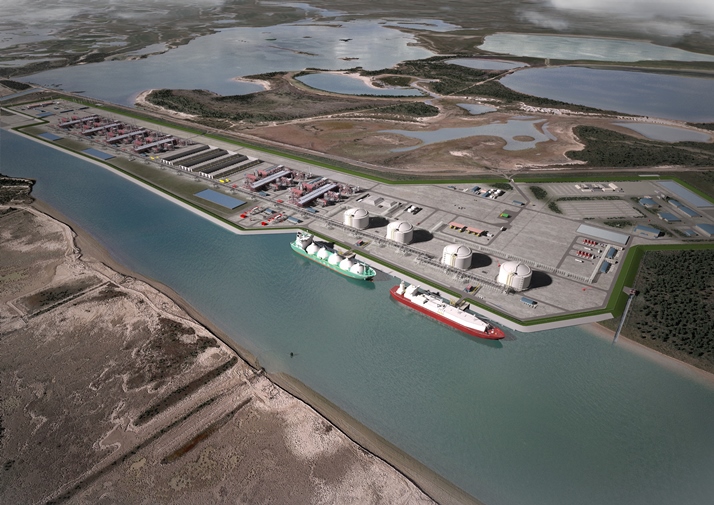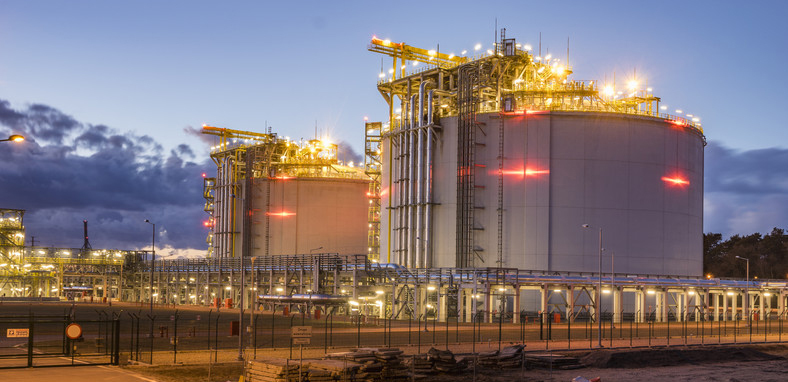Global LNG market could split if an EU carbon tax is imposed on imports, says WoodMac
The global liquefied natural gas (LNG) market could be transformed and potentially bifurcate if the European Union (EU) extends its carbon taxes to include LNG imports, according to a report by Wood Mackenzie.
The EU has extended its Emission Trading Scheme (ETS) to shipping, meaning that LNG cargoes into Europe will be subject to a carbon tax from 2024. Wood Mackenzie’s latest Horizons report explores the global implications of the levy and concludes that if the trading bloc goes further and tightens it methane regulation or includes LNG in its Carbon Border Adjustment Mechanism (CBAM) – effectively placing an import duty on LNG at prevailing ETS carbon prices – then Wood Mackenzie predicts that the global LNG market would split.

“If the EU decides to apply these levies, then this will push European gas prices up but also bifurcate the global LNG market, creating a two-tier LNG market,” Massimo Di Odoardo, Vice President of Gas & LNG Research at Wood Mackenzie, said in the report.
“If taxes were limited to the EU, or even extended to Japan and South Korea, trade flows would likely be optimised elsewhere to mitigate the impact,” he said.
LNG emissions under the scanner
The report states that the environmental credentials of LNG are under increasing scrutiny. Despite emitting about half the carbon dioxide (CO2) of coal when combusted, the LNG value chain remains highly carbon intensive and plagued by methane losses.
However, it adds that while LNG players are actively working to reduce the greenhouse gas (GHG) footprint of their projects, the reluctance from buyers to pay a premium for lower-emission LNG has so far curbed sellers’ appetite to commit to major investment to reduce carbon intensity.
US LNG one of the worst performers
The Wood Mackenzie report also found that not all LNG projects are equal. Measured in kilograms of carbon dioxide equivalent (kg CO2e), methane accounts for 5% to 15% of overall carbon intensity in LNG projects outside the US. But for LNG projects in the US, methane can account for as much as 25% to 40%. This is largely due to higher levels of methane losses caused by extensive use of pneumatic devices and compressors associated with shale gas production, Wood Mackenzie said.
“With a range of 800 to 1400 kilograms CO2 equivalent per tonne (CO2e/t) of LNG, the US has some of the world’s highest-emitting projects, with upstream reservoir type and pipeline distance to LNG plants adding to their high methane intensity,” Di Odoardo said.
According to Wood Mackenzie, projects with the lowest carbon emissions will gain from an import tax on emissions and targeting premium markets will boost trading profitability. However, proximity to premium markets will be key, with Qatar and Mozambique requiring high carbon prices to be lured away from proximate markets in emerging Asia, which are unlikely to introduce an import tax on emissions.
High carbon taxes needed to decarbonise LNG
The report‘s analysis concludes that a tax on methane emissions of US $2800 per tonne (t/CH4), equivalent to US $100/t CO2e, will be effective in achieving its goal. Methane reduction remains the low-hanging fruit in emissions, with progress being made in different countries, supported by tightening domestic methane regulations.

“A methane import tax will help provide additional economic incentives while limiting LNG price upside. In this scenario, exporting countries will also be encouraged to introduce domestic levies and retain taxed revenues,” Di Odoardo said.
However, Wood Mackenzie concluded that when it comes to overall carbon emissions, taxes imposed only in Europe will not achieve the required goal of large-scale decarbonisation of LNG projects globally and a bifurcate LNG market would be instead the most likely outcome.
“If there is to be any material impact, a carbon price closer to US $200/t CO2e will be required for LNG imports,” said Di Odoardo. “Additionally, this would have to be introduced on a global level for it to be truly effective in reducing carbon intensity and that is unlikely to happen. For now, all eyes will be on Europe to see what it does next.”
KEEPING THE ENERGY INDUSTRY CONNECTED
Subscribe to our newsletter and get the best of Energy Connects directly to your inbox each week.
By subscribing, you agree to the processing of your personal data by dmg events as described in the Privacy Policy.















